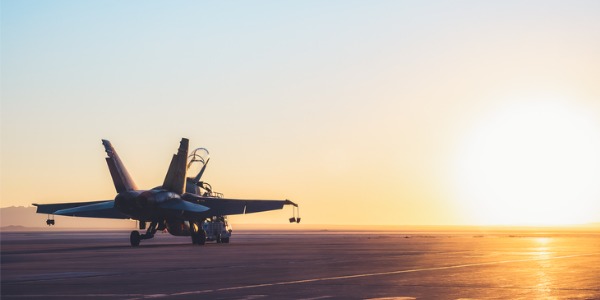What is an Air Force Officer?
An air force officer is a military leader responsible for guiding and supporting air operations. They work in various roles, including aviation, intelligence, logistics, and cyber operations, helping ensure missions run smoothly. Officers are trained to make quick decisions, manage personnel, and operate advanced technology to support national defense and global security efforts.
Being an air force officer comes with challenges, such as long hours, high-pressure situations, and time away from family, but it also offers unique experiences and opportunities. Officers build strong teamwork skills, gain leadership experience, and work with cutting-edge technology. Their service contributes to national security, disaster response, and global stability, making their role critical in both peacetime and conflict situations.
What does an Air Force Officer do?

Duties and Responsibilities
An air force officer's duties vary depending on their role, but they all play a vital part in maintaining security, supporting missions, and overseeing personnel. Here are some of their key responsibilities:
- Leadership and Decision-Making: Oversee personnel, manage operations, and make strategic decisions to ensure mission success while maintaining morale and discipline.
- Mission Planning and Execution: Develop, coordinate, and implement military air operations, including combat, surveillance, and support missions, ensuring all objectives are met efficiently.
- Operational Management: Supervise aircraft maintenance, logistics, and resource allocation to keep air force units mission-ready, ensuring all equipment and personnel are prepared for deployment.
- Intelligence and Surveillance: Analyze data from reconnaissance missions, radar systems, and cybersecurity operations to support national defense strategies and provide critical real-time information.
- Communication and Coordination: Work with other military branches, allied forces, and government agencies to coordinate joint operations and strategic planning, ensuring smooth collaboration during missions.
- Crisis Response and Emergency Management: Lead teams in responding to natural disasters, humanitarian missions, and combat situations, making quick decisions to protect lives and assets.
- Training and Development: Provide guidance and mentorship to enlisted personnel, ensuring they are skilled, disciplined, and prepared for their roles through structured training programs.
- Policy and Compliance: Enforce military regulations, security protocols, and ethical standards to maintain discipline, operational effectiveness, and adherence to national defense policies.
Types of Air Force Officers
An air force officer can serve in various roles, depending on their specialization and mission needs. Here are the main types of air force officers:
- Pilot Officer: Operates military aircraft, including fighter jets, bombers, transport planes, and reconnaissance aircraft, to carry out combat and support missions.
- Combat Systems Officer (CSO): Manages navigation, weapons systems, and electronic warfare operations on military aircraft, ensuring mission effectiveness.
- Air Battle Manager (ABM): Directs and coordinates air combat operations by tracking aircraft, monitoring radar systems, and guiding tactical air missions.
- Intelligence Officer: Analyzes and interprets intelligence data from surveillance, reconnaissance, and cyber operations to support mission planning and national security.
- Cyber Warfare Officer: Defends military networks, conducts offensive cyber operations, and develops cybersecurity strategies to protect air force systems.
- Space Operations Officer: Oversees satellite communications, missile warning systems, and space-based reconnaissance to support military and defense operations.
- Aircraft Maintenance Officer: Manages maintenance teams responsible for inspecting, repairing, and ensuring the readiness of military aircraft.
- Logistics Readiness Officer: Oversees supply chain operations, transportation, and distribution of equipment, fuel, and resources needed for air force missions.
- Special Tactics Officer: Leads elite ground forces in high-risk missions, including combat search and rescue, airfield control, and special operations support.
- Air Traffic Control Officer: Directs and manages the safe movement of military aircraft during takeoff, landing, and in-flight operations.
- Security Forces Officer: Leads military police units responsible for base security, law enforcement, and force protection against threats.
- Medical Service Officer: Provides healthcare support, manages medical teams, and ensures the health and readiness of air force personnel.
- Public Affairs Officer: Manages media relations, communications, and public outreach to inform and engage the public about air force operations.
Air force officers have distinct personalities. Think you might match up? Take the free career test to find out if air force officer is one of your top career matches. Take the free test now Learn more about the career test
What is the workplace of an Air Force Officer like?
The workplace of an air force officer depends on their role and assignment, but it is usually fast-paced and highly structured. Many officers work on military bases, where they manage daily operations, train personnel, and plan missions. Those involved in aviation may spend much of their time in flight operations centers or on airfields, preparing for missions, conducting briefings, and coordinating aircraft movements. Offices, command centers, and specialized facilities with advanced technology are common workplaces for officers handling intelligence, cybersecurity, or logistics.
For officers who fly aircraft, their workplace often includes cockpits, flight simulators, and air traffic control centers. Pilots, combat systems officers, and air battle managers operate in high-pressure environments where precision and quick decision-making are critical. Those working in engineering, medical, or security roles may spend their time in labs, hospitals, or base security offices. Some officers are also deployed to remote locations or combat zones, where they must adapt to challenging environments and demanding schedules.
Air force officers often work long hours, including nights, weekends, and on-call shifts, depending on mission requirements. They may travel frequently for training exercises, deployments, or international assignments. While the job can be stressful and physically demanding, it also provides teamwork, leadership experience, and the opportunity to work with cutting-edge technology.
Frequently Asked Questions
Military Related Careers and Degrees
Careers
- Military Tactical Operations Leader
- Military Aircrew Member
- Military Air Crew Officer
- Military Firefighter
- Armored Assault Vehicle Crew Member
- Infantry Soldier
- Navy Officer
- Army Officer
- Air Weapons Specialist
- Aircraft Launch and Recovery Specialist
- Control Center Specialist
- Special Forces Officer
- Artillery Crew Member
- Intelligence Analyst
- Shipmate
- Air Force Officer
Degrees